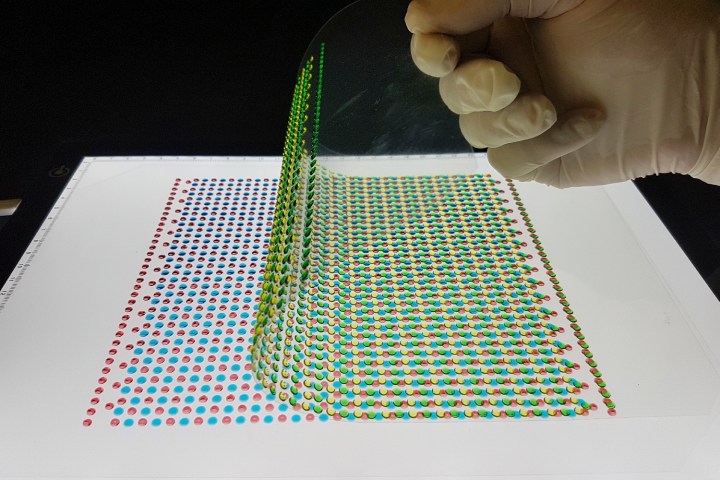Eels may one day help keep you alive. No, we’re not referencing the disappointing Gore Verbinski movie A Cure for Wellness, but rather research coming out of Switzerland’s University of Fribourg, where researchers have created a soft electric eel-inspired battery that may one day power pacemakers and other medical implants.
“We have developed a soft power source that uses compartments of differing salt concentrations to generate electricity through a principle called reverse electrodialysis,” Anirvan Guha, one of the lead researchers on the project, told Digital Trends. “We showed that we can use this system to generate 110 volts from salt and water on a sheet the size of a normal piece of printer paper.”
The sheet-like batteries are made from hydrogels, which are soft, flexible, and potentially biocompatible — not exactly properties you find in your everyday lithium-ion fuel cells. Guha said that the lab he works in has long been interested in how to use ion concentration gradients to perform tasks or produce energy. “In this regard, the electric eel is an excellent model system, as it is able to generate immense amounts of electric power solely from the ion gradients present within its body,” he said. “We therefore set out to understand how the eel produces such a large amount of electricity, which ultimately guided the design of our system.”
The ions in the battery produce power (roughly the equivalent amount provided by wall sockets) through the friction between gel layers. Although the resulting device doesn’t physically resemble an electric eel in shape, the material is similar to the layers of skin in the electric eel that produce the electricity that gives it its name.
“One of the primary challenges toward making this a reality [in terms of incorporating it into pacemakers] is improving the current generation of the system to a point where it could be used to power these types of devices,” Guha said.
A paper describing the work, titled “An electric-eel-inspired soft power source from stacked hydrogels,” was recently published in the journal Nature. The work was presented this week at the Biophysical Society in San Francisco.



